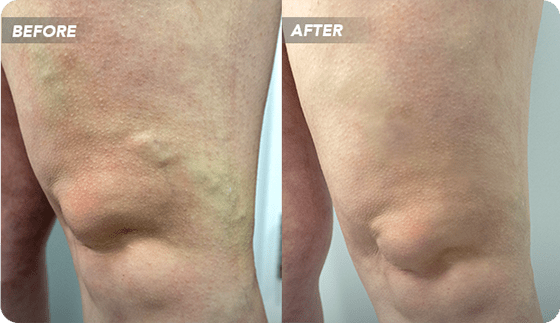Spider veins, those tiny, web-like clusters of red or blue veins that often appear on the legs, can be a source of discomfort and self-consciousness for many individuals. The desire to eliminate or reduce the appearance of spider veins has led to various treatments and procedures. In this comprehensive exploration, we delve into the question: Does spider vein removal really work? Let’s examine the advantages, different techniques, and realistic expectations associated with spider vein removal.
Advantages Of Spider Vein Removal:
- Enhanced Aesthetics And Confidence Boost: Spider veins, though generally harmless, can impact one’s confidence and self-esteem. Removal procedures aim to improve the aesthetic appearance of the affected areas, leading to a significant boost in confidence for individuals undergoing treatment.
- Relief From Discomfort And Pain: Spider veins may cause discomfort and pain, especially when standing or sitting for extended periods. Spider vein removal can provide relief from these symptoms, contributing to improved overall comfort and well-being.
- Prevention Of Potential Complications: While spider veins themselves are not usually a serious health concern, their presence may indicate an underlying issue with the circulatory system. Removing spider veins can contribute to preventing potential complications and maintaining vascular health.
Techniques For Spider Vein Removal:
- Sclerotherapy: Sclerotherapy is a widely used and effective technique for spider vein removal. In this procedure, a solution is injected into the affected veins, causing them to collapse and eventually fade. Multiple sessions may be required for optimal results.
- Laser Therapy: Laser therapy uses focused light to target and eliminate spider veins. This non-invasive procedure is often preferred for smaller veins and can be an efficient option for those seeking minimal downtime.
- Endovenous Laser Treatment (Evlt): For larger veins or cases involving venous insufficiency, Endovenous Laser Treatment (EVLT) may be recommended. This procedure involves the use of laser energy to seal off the affected vein, rerouting blood flow to healthier vessels.
- Ambulatory Phlebectomy: Ambulatory phlebectomy is a surgical technique where tiny incisions are made to physically remove clusters of spider veins. This method is particularly effective for larger veins and allows for precise targeting of the affected areas.
Realistic Expectations For Spider Vein Removal:
- Gradual Improvement Over Time: Spider vein removal procedures typically show gradual results over several weeks to months. It’s essential for individuals undergoing treatment to have realistic expectations and understand that complete resolution may take time.
- Possibility Of Multiple Sessions: Depending on the severity and extent of spider veins, multiple treatment sessions may be necessary to achieve the desired outcome. Patience and commitment to the recommended treatment plan are crucial for success.
- Potential For Recurrence: While spider vein removal procedures aim for long-term results, there is a possibility of new spider veins developing over time. Lifestyle factors, genetics, and other variables can contribute to the recurrence of spider veins.
- Post-Treatment Care: Following spider vein removal, proper post-treatment care is essential. This may include wearing compression stockings, avoiding prolonged periods of sitting or standing, and maintaining a healthy lifestyle to support overall vascular health.
Conclusion:
In the quest for smoother, healthier-looking skin, the question remains: Does spider vein removal really work? The answer lies in understanding the advantages, exploring various techniques, and setting realistic expectations. Spider vein removal can indeed be effective, offering aesthetic improvements, relief from discomfort, and a proactive approach to vascular health. As with any medical procedure, consulting with a qualified healthcare professional is crucial to determine the most suitable treatment plan based on individual needs and circumstances.
Top of Form

